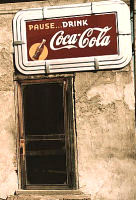The Great Depression to World War II: Photos from the FSA-OWI

During the New Deal and World War II, a period marked by the impulse to capture in writing, sounds, and images significant aspects of American life and traditions, government photographers with the Farm Security Administration (FSA) and the Office of War Information (OWI) took hundreds of thousands of pictures. This website features more than 150,000 photographs from this project. The photographs document the ravages of the Great Depression, scenes of everyday life in small towns and cities, and mobilization campaigns for World War II.
This site also includes approximately 1,600 color photographs and selections from two popular collections: "'Migrant Mother' Photographs" and "Photographs of Signs Enforcing Racial Discrimination." The site also provides a bibliography, a background essay, portrait samples of 18 FSA-OWI photographers, and links to five related sites. This is a great source for studying the documentary expression of the 1930s and 1940s.
